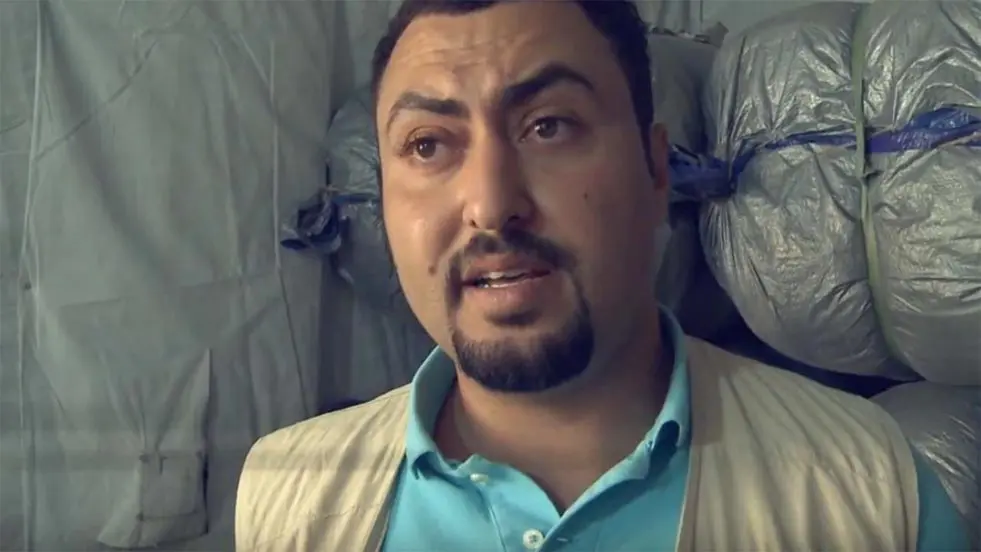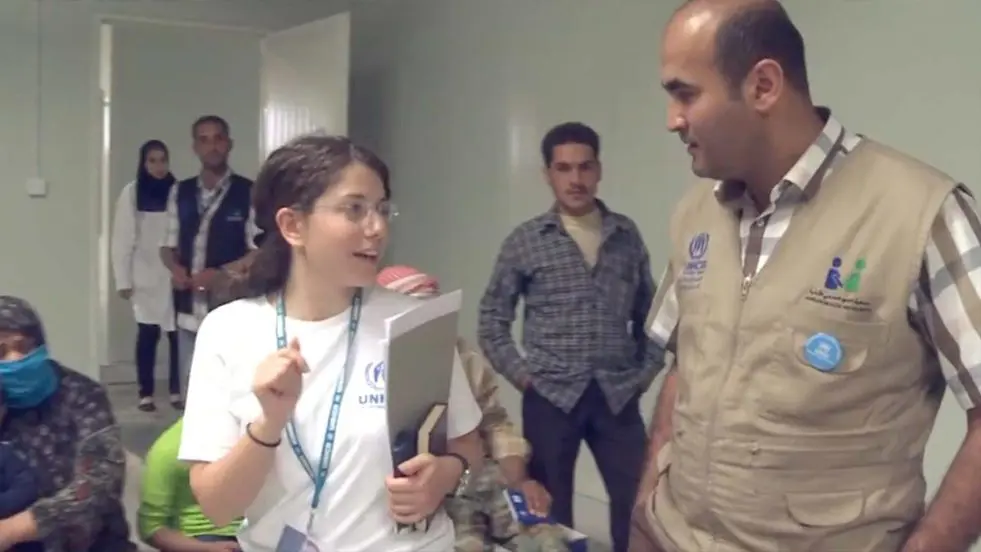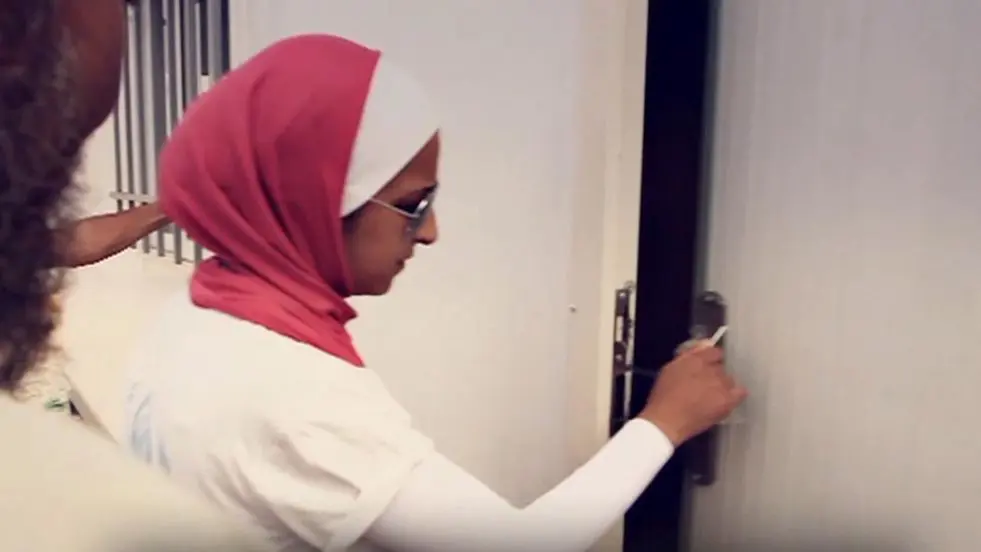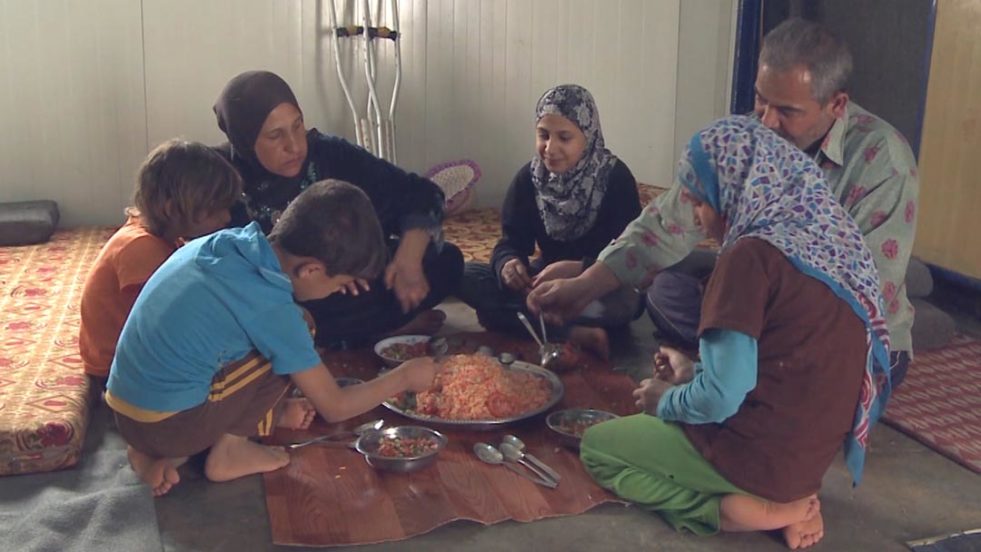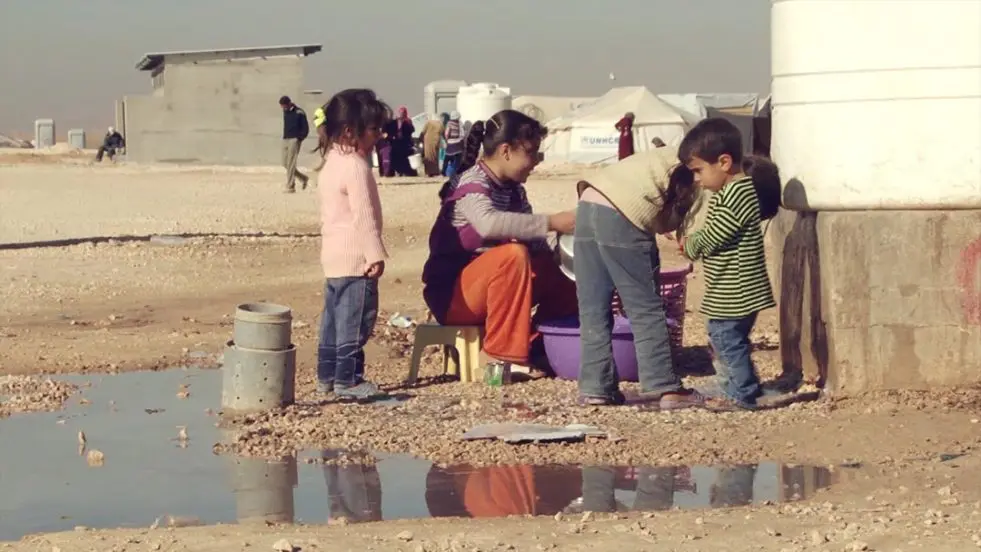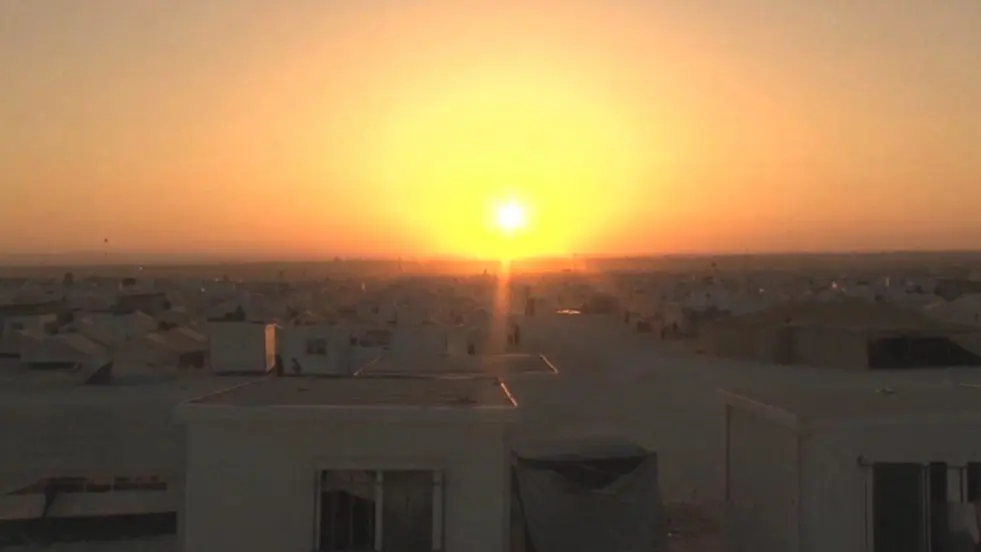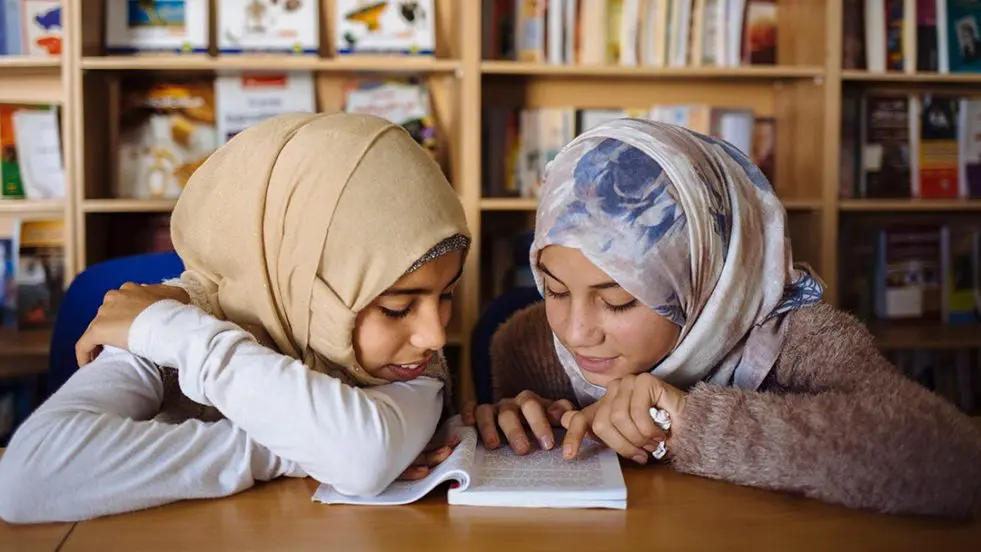EPISODE 3 OF BETWEEN LIVES (S1):
Thirst for life
Supplying water in a desert
S1E3: Thirst for life
In Episode 3 of Between Lives, see how UNHCR gets water to the thousands of people like Abdul and Farida’s family in Za’atari Camp in Jordan.
Ihab Shaban will guide you through the logistical challenge of providing water and sanitation for around 76,000 people living in the middle of a desert.
Want to see the whole story?
Did you know?
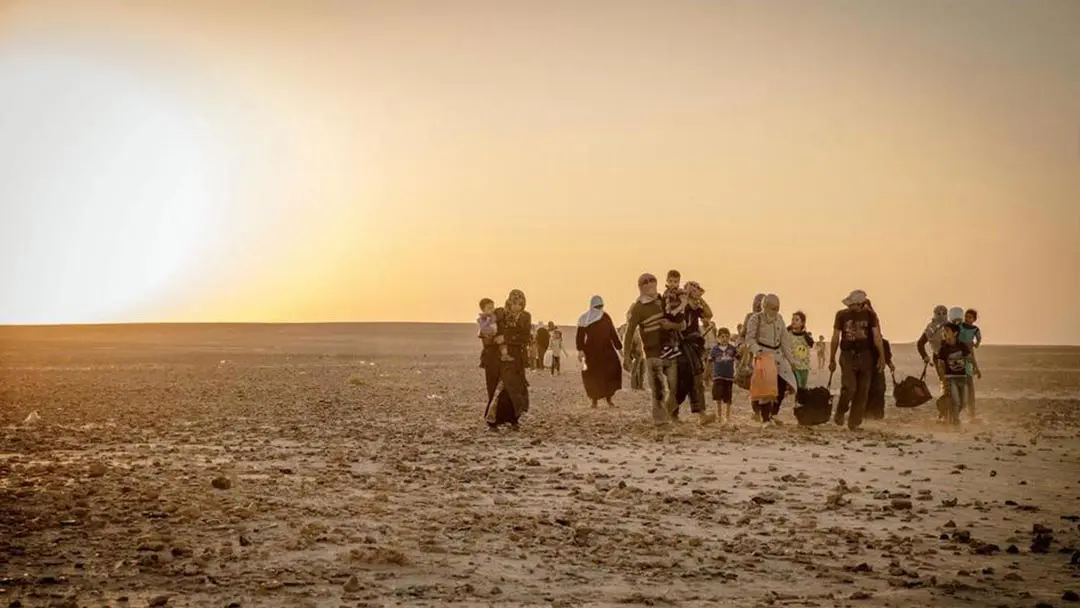
With a population of around 76,000 people, Za’atari Camp is basically a city that sprang up overnight. There are no rivers, lakes or streams near Za’atari, so providing water for the thousands of families like Abdul and Farida’s is a massive logistical challenge.
Your regular support means that we can get clean, healthy water on tap to people like Abdul and Farida. With water, they can not only survive, but start to thrive too.
“I’ve seen what happens when people don’t have clean water – and I won’t let that happen here.”
Syrian children collect water from a communal tap in Jordan’s Za’atari centre. Credit ©UNHCR/J.Kohler
In Episode 3 of Between Lives, Amin Bhai, UNHCR WASH (Water, Sanitation and Hygiene) Officer in Za’atari, explains some of the difficulties he faces on a daily basis, in trying to provide water and sanitation for around 76,000 people.
I wanted to do this job because of what I saw in India, where my parents are from. When there’s no clean water people get all sorts of horrible conditions and diseases and can really suffer, or even die. So when the opportunity came up to do this job, I didn’t really have to think twice.
I arrived here in the summer of 2012, just after the camp opened. There were less than 20,000 people here then, but that soon ballooned to over 120,000. It has since declined to around 76,000 people, but the task was still hugely daunting. There is no easily accessible water source anywhere near us; we’re pretty much in the middle of nowhere.
We had to build water and sanitation infrastructure for tens of thousands of people, we had to do it quickly and we were starting from scratch.
At first all the water was trucked in, but pretty early on we took the decision to sink boreholes. That’s a huge technical challenge because we had to go down 500 metres. And even after the drilling was done there was so much more to think about: how to get water from the boreholes into the washrooms and bathrooms in camp, how to keep it clean and how to get the waste out safely. When somewhere is as crowded as Za’atari the sanitation is crucial. Waterborne disease is a real risk but, fingers crossed, we’ve not had any serious outbreaks yet.
Even today, several years down the line, there’s still new challenges every day. We’re continually trying to make the system better so that everybody here can get water to drink and wash without too many problems. We’ll be sinking another borehole soon and that will mean that everybody has access to a tap within a few metres of their home.
Getting water to people is vital for their health, but here in Jordan it’s also about their dignity and independence.
People need to wash before prayers, it’s part of who they are. They’ve already lost so much: their homes, their livelihoods and often even family members, so it’s really important to give them water and the means to live as normal a life as possible.
Like I said, there are still new challenges every day, and that’s going to continue. So I’m really grateful for your ongoing support and donations. We’re going to be here for as long as we’re needed and it’s fantastic to have people like you on our side.
Amin Bhai
UNHCR WASH Officer, Za’atari.
Facts and Figures
35 litres – amount of water required per person per day
20 – average no. of trucks delivering water each day
Three internal water wells established in 2016 have a combined daily capacity of 3,800m3
352 – no. of communal washblocks
Wastewater treatment plant has a capacity of 3,600m3 /day
477 – no. of communal tapstands
Statistics correct as of August 2017



